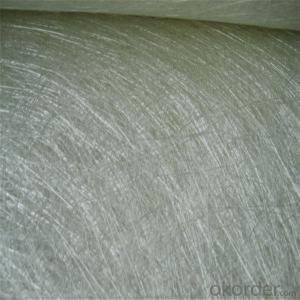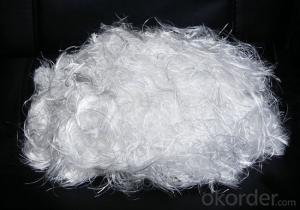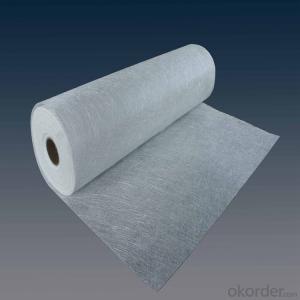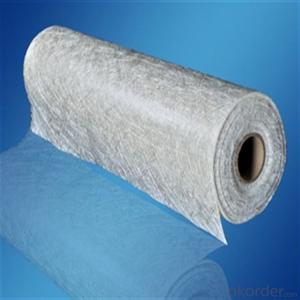Fiberglass Chopped Strand Polyester Fiber Mat
- Loading Port:
- Tianjin
- Payment Terms:
- TT OR LC
- Min Order Qty:
- 100 m.t.
- Supply Capability:
- 20000 m.t./month
OKorder Service Pledge
Quality Product, Order Online Tracking, Timely Delivery
OKorder Financial Service
Credit Rating, Credit Services, Credit Purchasing
You Might Also Like
Quick Details
| Technique: | Chopped Strand Fiberglass Mat (CSM) | Dimensions: | 450gsm | Mat Type: | Continuous Filament Mat |
| Fiberglass Type: | E-Glass | Softness: | softness | Place of Origin: | Jiangxi, China (Mainland) |
| Brand Name: | cnbm | Model Number: | 450gsm | color: | white |
| fiberglass type: | E glass | product: | e-glass powder chopped stand mats | binder: | powder or emulsion |
| width: | 1040 or 1270mm, as your requirement | weight: | 30 or 45kg/roll | paper tube diameter: | 90mm |
| outer diameter of roll: | 256mm | packing: | plastic film+carton box + pallet |
Packaging & Delivery
| Packaging Details: | plastic film+carton box + pallet |
| Delivery Detail: | 15-20days |
Specifications
1.e-glass powder chopped stand mats
2.binder:power or emulsion
3.width:1040mm or 1270mm
4.weight:450gsm
Picture
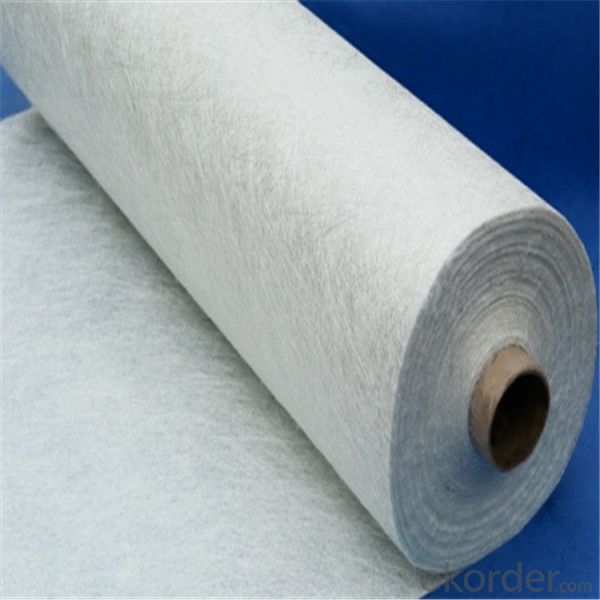
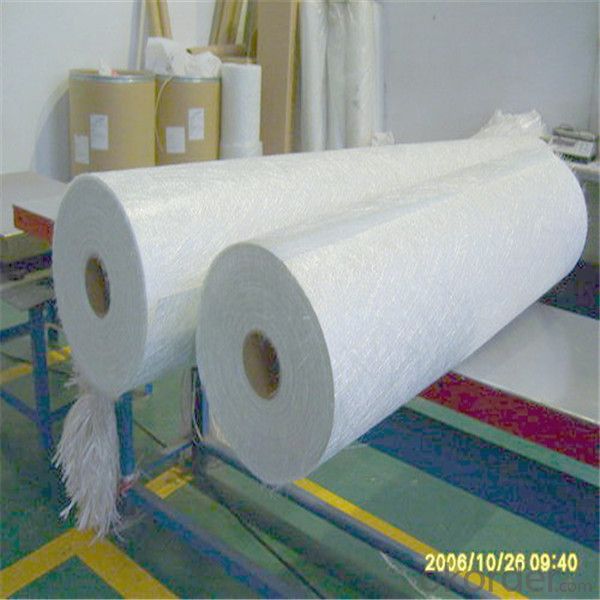
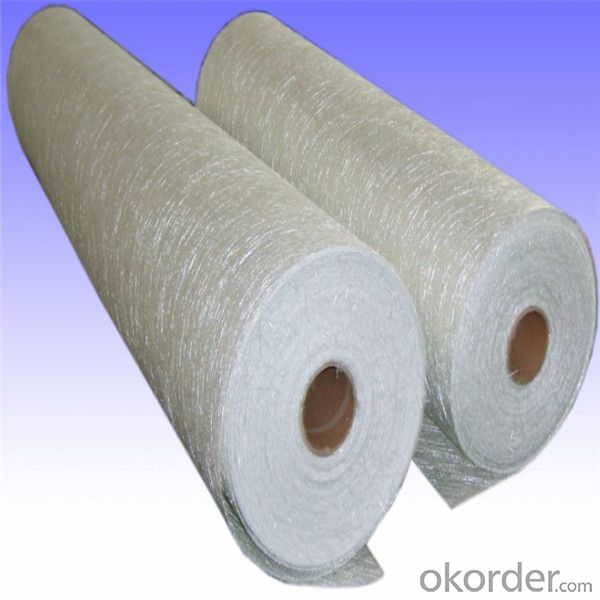
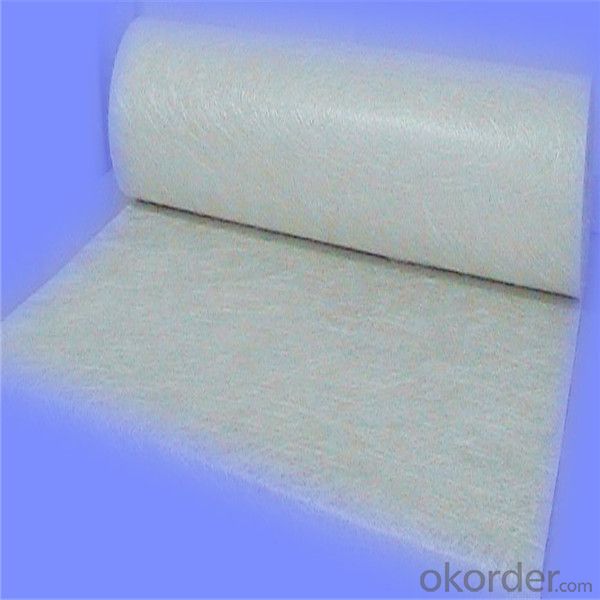
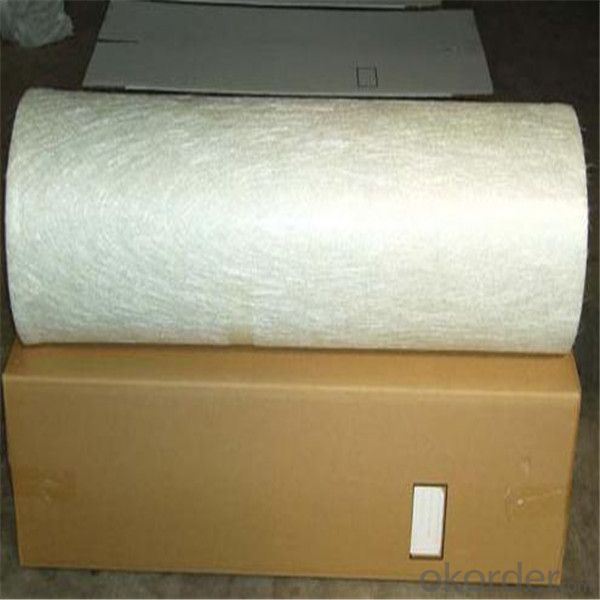
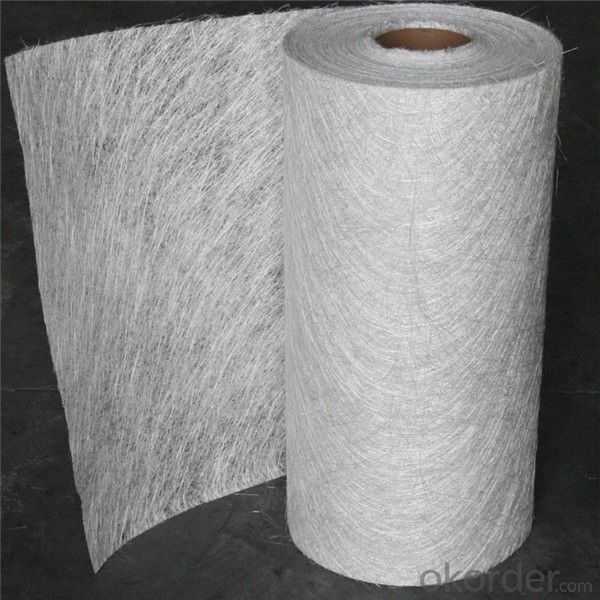
- Q:Can fiberglass chopped strand be used in the production of boat hulls?
- Yes, fiberglass chopped strand can be used in the production of boat hulls. Fiberglass chopped strand is a type of reinforcement material that is commonly used in composite materials, including boat hulls. It is made up of small fibers of glass that are randomly chopped into short lengths and then mixed with a resin to create a strong and durable composite material. When used in boat hull production, fiberglass chopped strand helps to provide strength, stiffness, and impact resistance to the hull, making it suitable for withstanding the harsh conditions of marine environments. Additionally, fiberglass chopped strand can be easily molded into complex shapes, allowing boat manufacturers to create hulls with specific designs and features. Overall, fiberglass chopped strand is a commonly used and effective material in the production of boat hulls.
- Q:Can fiberglass chopped strand be used in the production of agricultural equipment?
- Yes, fiberglass chopped strand can be used in the production of agricultural equipment. Fiberglass is a versatile material that offers several advantageous properties for agricultural applications. It is lightweight, strong, and durable, which makes it suitable for use in equipment such as tractor hoods, fenders, and panels. Fiberglass also has excellent corrosion resistance, which is important in the agricultural industry where equipment is exposed to various weather conditions and chemicals. Additionally, fiberglass can be molded into complex shapes, allowing for the customization of agricultural equipment according to specific requirements. Overall, using fiberglass chopped strand in the production of agricultural equipment can enhance its performance, longevity, and reliability.
- Q:How does the moisture absorption of fiberglass chopped strand impact its performance?
- The moisture absorption of fiberglass chopped strand can have a negative impact on its performance. When fiberglass absorbs moisture, it can weaken its overall strength and structural integrity. Moisture can also lead to delamination or cracking, reducing the effectiveness of the fiberglass in applications such as construction, automotive, or marine industries. Therefore, controlling moisture absorption is crucial for maintaining the performance and durability of fiberglass chopped strand.
- Q:Does fiberglass chopped strand have any fire-resistant properties?
- No, fiberglass chopped strand does not have inherent fire-resistant properties. However, it can be treated or combined with fire-resistant materials to enhance its fire resistance.
- Q:Is fiberglass chopped strand suitable for renewable energy applications?
- Yes, fiberglass chopped strand is suitable for renewable energy applications. Fiberglass is a versatile material known for its strength, durability, and resistance to corrosion, making it an ideal choice for various renewable energy applications. In wind energy, fiberglass chopped strand is commonly used in the manufacturing of wind turbine blades. The material's high tensile strength and ability to withstand harsh weather conditions make it an excellent choice for this application. Fiberglass also offers lightweight properties, which is crucial for minimizing the weight of the blades and maximizing energy production. Furthermore, fiberglass chopped strand is used in the construction of solar panels. The material provides excellent electrical insulation, which is essential for maintaining the efficiency and safety of solar panels. Fiberglass also offers high thermal resistance, enabling the panels to withstand extreme temperatures and prolong their lifespan. Additionally, fiberglass chopped strand can be used in the manufacturing of hydroelectric power equipment. Its corrosion resistance properties make it suitable for withstanding the harsh conditions present in hydroelectric power plants, such as exposure to water and moisture. Overall, fiberglass chopped strand is a reliable and effective material for renewable energy applications. Its strength, durability, and resistance properties make it a suitable choice for wind energy, solar power, and hydroelectric power applications.
- Q:Is fiberglass chopped strand compatible with polyester resin?
- Yes, fiberglass chopped strand is compatible with polyester resin. Both materials are commonly used together in various applications such as boat building, automotive parts, and construction. Polyester resin is a popular choice for bonding and reinforcing fiberglass chopped strand because it provides good adhesion, strength, and durability. The resin encapsulates the chopped strands, creating a strong composite material. However, it is important to note that the compatibility also depends on the specific type and brand of fiberglass chopped strand and polyester resin being used, so it is always recommended to check the manufacturer's guidelines and conduct a small-scale test before proceeding with a larger project.
- Q:Is fiberglass chopped strand suitable for renewable energy applications?
- Yes, fiberglass chopped strand is suitable for renewable energy applications. Fiberglass is a versatile material known for its strength, durability, and resistance to corrosion, making it an ideal choice for various renewable energy applications. In wind energy, fiberglass chopped strand is commonly used in the manufacturing of wind turbine blades. The material's high tensile strength and ability to withstand harsh weather conditions make it an excellent choice for this application. Fiberglass also offers lightweight properties, which is crucial for minimizing the weight of the blades and maximizing energy production. Furthermore, fiberglass chopped strand is used in the construction of solar panels. The material provides excellent electrical insulation, which is essential for maintaining the efficiency and safety of solar panels. Fiberglass also offers high thermal resistance, enabling the panels to withstand extreme temperatures and prolong their lifespan. Additionally, fiberglass chopped strand can be used in the manufacturing of hydroelectric power equipment. Its corrosion resistance properties make it suitable for withstanding the harsh conditions present in hydroelectric power plants, such as exposure to water and moisture. Overall, fiberglass chopped strand is a reliable and effective material for renewable energy applications. Its strength, durability, and resistance properties make it a suitable choice for wind energy, solar power, and hydroelectric power applications.
- Q:Can fiberglass chopped strand be used in the production of insulation panels?
- Yes, fiberglass chopped strand can be used in the production of insulation panels. Fiberglass chopped strand is commonly used as a reinforcement material in various composite applications, including insulation panels. It provides strength, durability, and thermal insulation properties to the panels. The chopped strands are mixed with a binder material and then formed into panels using various manufacturing techniques such as compression molding or pultrusion. The resulting insulation panels offer excellent thermal insulation properties, low thermal conductivity, and high resistance to heat transfer, making them suitable for a wide range of applications in the construction and industrial sectors.
- Q:Is fiberglass chopped strand compatible with different processing techniques?
- Yes, fiberglass chopped strand is compatible with different processing techniques. It can be used in various manufacturing processes such as injection molding, compression molding, pultrusion, and filament winding. The versatility of fiberglass chopped strand allows it to be easily incorporated into different production methods, making it a popular choice in industries such as automotive, construction, and aerospace.
- Q:How does the diameter of the chopped strand affect its performance?
- The diameter of the chopped strand plays a significant role in determining its performance. A smaller diameter typically results in improved performance characteristics, such as increased tensile strength and better adhesion properties. Firstly, a smaller diameter chopped strand provides a higher surface area-to-volume ratio. This increased surface area allows for better bonding with the resin matrix in composite materials, leading to enhanced mechanical properties. The smaller diameter also promotes better resin penetration, ensuring a more uniform distribution of the resin throughout the composite structure. This, in turn, improves the overall strength and structural integrity of the final product. Additionally, a smaller diameter chopped strand can contribute to a higher fiber loading in the composite. This means that a greater number of strands can be incorporated into the resin matrix, resulting in a higher reinforcement content. This increased reinforcement content enhances the stiffness and strength of the composite material, making it more resistant to deformation and failure under load. Moreover, the smaller diameter also aids in achieving a more homogeneous dispersion of the chopped strands within the resin matrix. This uniform distribution of fibers helps to prevent the formation of voids or weak spots in the composite, ensuring consistent and reliable performance. It is important to note that the diameter of the chopped strand should be selected based on the specific application requirements. While a smaller diameter may offer better performance characteristics, it may also result in increased processing difficulty or higher cost. Therefore, a balance between the desired performance and practical considerations should be achieved when choosing the diameter of the chopped strand.
1. Manufacturer Overview |
|
|---|---|
| Location | |
| Year Established | |
| Annual Output Value | |
| Main Markets | |
| Company Certifications | |
2. Manufacturer Certificates |
|
|---|---|
| a) Certification Name | |
| Range | |
| Reference | |
| Validity Period | |
3. Manufacturer Capability |
|
|---|---|
| a)Trade Capacity | |
| Nearest Port | |
| Export Percentage | |
| No.of Employees in Trade Department | |
| Language Spoken: | |
| b)Factory Information | |
| Factory Size: | |
| No. of Production Lines | |
| Contract Manufacturing | |
| Product Price Range | |
Send your message to us
Fiberglass Chopped Strand Polyester Fiber Mat
- Loading Port:
- Tianjin
- Payment Terms:
- TT OR LC
- Min Order Qty:
- 100 m.t.
- Supply Capability:
- 20000 m.t./month
OKorder Service Pledge
Quality Product, Order Online Tracking, Timely Delivery
OKorder Financial Service
Credit Rating, Credit Services, Credit Purchasing
Similar products
New products
Hot products
Related keywords




